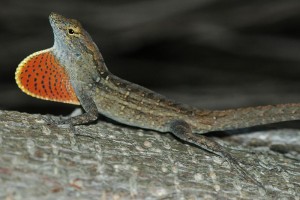Being marooned on a beautiful deserted island may sound like heaven, but for these lizards, their tropical holiday was all in the name of science.
From the time that the HMS Beagle landed in the Galapagos Islands in 1835, remote islands have had a special part to play in our understanding of the natural world. It was on the untouched Galapagos that Charles Darwin observed the divergent traits of finches on the various islands, which famously sparked his thesis on natural selection, paving the way for a revolution in science.
Self-contained ecosystems that stay largely free of outside influence, there is no better laboratory for nature’s creativity than a faraway isle; once a species is introduced, the island’s unique environment can produce dramatic changes over the years. Warm climates also tend to be most hospitable to biodiversity, making some tropical islands, like Guana Island in the British Virgin Islands, home to the greatest concentrations of species in the world.
Recently, a team of scientists had the opportunity to create some “Darwin’s finches” of their own, in a fascinating experiment that is studying evolution at work. After Hurricane Frances ravaged the Caribbean in 2004, seven small, uninhabited islands in the Bahamas were wiped clean of most fauna, including the little anole lizards, a native Bahamian species found throughout the country. This ‘tabula rasa’ gave the scientists, led by Harvard University biologist Jonathan Losos, the unique chance to test out a hotly-contested evolutionary theory.
The idea was a simple one: what would happen if pairs of lizards were each introduced to a different island? Would they thrive, or disappear? And if the lizards survived, would the traits of the initial pair have a strong influence on the new generations – an unproven theory known as the Founder Effect? Thankfully for the little anoles, they flourished on the islands; within two years, one of the islands had a growing population of 40, all descended from the first two castaways.
Among the Robinson Crusoe lizard colonies, a fast adaptation to their new home was observed by the scientists; the initial pairs were taken from larger islands with vegetation that required long hind limbs, but after a few generations on the little sandy isles, all of the lizards had developed shorter limbs in sync with the smaller plants in their environment. Losos and his team did observe, however, that on the islands where the founding couple had longer limbs, the anoles still had comparatively lengthy hind legs, which may give credibility to the Founder Effect.
Since the founder effect is a fairly simple thesis, it’s easy to underestimate just how difficult it is to find the right conditions to see it at work – if not bordering on the impossible, according to Losos, who says that it has almost never been observed in nature. The ongoing anole lizard study is providing vitally important information on the potential conservation of threatened species; just one more reason why islands, nature’s ‘test tubes’, are so amazing.
Read the original article: Huffington Post




